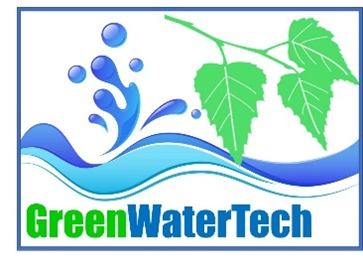Green Ultrafiltration Water Cleaning Technologies
Clean water is a key challenge in the 21st century, articulated in the UN sustainable development goal no. 6. In close collaboration with industry and stakeholders, this project aims at developing new types of sustainable water treatment techniques that is, cheap, easy to maintain and can be applied in settings/countries where clean water is a challenge. By using non-critical and non-toxic materials to eliminate contaminants of emerging concern and pathogens, including antibiotic resistant bacteria, the project aims to avoid their further spread in a safe and sustainable way. We will develop a water cleaning concept, amenable for decentralized use, that will be validated on a small pilot scale comprising a series of modules: 1) An enzymatic step including nanoporous materials bearing enzymes and chelating functions to retain hazardous metals, 2) enzyme-mimetic nanomaterials, 3) nanoporous adsorbents, and finally 4) a photocatalytic step that ensures zero-discharge of contaminants. Laboratory scale research will be implemented in reactor modules in collaboration with industrial partners. The evaluation of different combinations of modules will be an integral part of the project. Industrial partners will provide engineering solutions that allow testing of new materials/technologies. Associated partners will evaluate the technology and spread r results, to various industries as well as stakeholders in the developing world.
Keywords
Enzyme immobiolization, enzyme-mimetics, nanoporous adsorbents, photocatalysis, modular ultrafiltration
Achievements so far
The GreenWaterTech project aims to develop ultrafiltration technology for water treatment to remove chemicals of emerging concern (CECs). The three-stage water treatment process includes enzymatic, adsorptive and photocatalytic methods.
In step 1, three promising enzymes - Laccase, horseradish peroxidase (HRP) and PFP - were selected for the oxidative destruction of various xenobiotics. The immobilisation technique using a silica layer showed improved stability and activity and protected the enzymes from metal ions. Heavy metals such as Cd, As and Co were removed using phosphate-modified mesoporous silicate pre-filters.
In step 2, non-toxic nanoadsorbents based on cerium dioxide (CeO2) were synthesised to remove hazardous pollutants and reduce toxic effects on aquatic organisms.
In step 3, photocatalytic nanocomposites based on titania were developed and tested for UV-A-assisted degradation of pollutants, showing promising results in the removal of phenol, diclofenac, bisphenol and organophosphorus compounds. The antiviral efficacy of the sulphated titania nanocomposites was demonstrated.
The results were disseminated through scientific publications, conferences and communication with end users. Consortium meetings have been held and intellectual property considerations are ongoing for the second phase of the project.
If you're interested in scientific publications associated with GreenWaterTech, click here.
